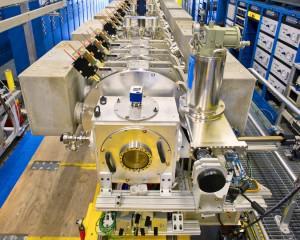 Thursday, July 5th, saw Japan return to nuclear power generation after two months of being without the increasingly unpopular energy source in the country. In an unorthodox appeal to the people of Japan, Japan’s Premier attempted to turn the people back to the idea that nuclear generation is necessary in order to maintain the living standard they are used to. Without nuclear energy, which historically accounted for about 30% of the country’s energy generation, rolling blackouts and interruption of power availability would become widespread as temperatures rise for the hot summer.
Thursday, July 5th, saw Japan return to nuclear power generation after two months of being without the increasingly unpopular energy source in the country. In an unorthodox appeal to the people of Japan, Japan’s Premier attempted to turn the people back to the idea that nuclear generation is necessary in order to maintain the living standard they are used to. Without nuclear energy, which historically accounted for about 30% of the country’s energy generation, rolling blackouts and interruption of power availability would become widespread as temperatures rise for the hot summer.
On the other side of the Pacific Ocean, California is experiencing its own nuclear power issues as a result of a small leak of radioactive steam by the San Onofre Nuclear Generating Station in January of this year. The plant, located halfway between San Diego and Los Angeles, has been shut down for five months as an investigation into the steam leak is being conducted. Japan and California, though thousands of miles apart, share a similar issue: people are becoming less patient with nuclear power, and calls to shut down nuclear plants are becoming more common.
In an article I wrote just a few weeks ago, I called attention to the fact that renewable energy currently just doesn’t have the capacity that nuclear power does, and expecting to switch from nuclear power to renewables is not likely to happen very quickly. So as more and more people call for a shutdown in nuclear power, where can we expect enough energy to be generated to offset these massively powerful reactors?
Fusion power may hold the answer to our future energy needs. When most people hear about fusion, it is usually in the context of the hydrogen-to-helium reaction that occurs in the sun. Like traditional nuclear fission reactions, fusion generates energy by manipulating atoms. As the names suggest, however, fission is the release of energy after splitting atoms, while fusion is the release of energy while fusing the two atoms together. Fission reactions release about a million times more energy than chemical reactions, and fusion has the potential to release 3 to 4 times as much energy as fission. Fusion is commonly joked about as being the energy source of the future, and always will be, and scientists working on the energy source have similarly remarked about just how difficult this energy source is to harness. One such scientist, Sébastien Balibar, stated, “We say that we will put the sun into a box. The idea is pretty. The problem is, we don’t know how to make the box.”
Numerous labs within the United States and around the world are working on the fusion problem as the technology appears to have limited environmental repercussions, limited environmental risks, and no spent fuel, which are problems that current nuclear fission power plants experience. The potential energy generation from fusion is mind boggling as well. The average American citizen uses about 250 kilowatt-hours of energy per day. This includes driving their cars to and from work, heating or cooling their homes, working on their computers, and so on. Deuterium, the element necessary for nuclear fusion, is present in the quantity of 33 grams in every ton of water. The amount of energy released from just one gram of deuterium fusion reaction is 100,000 kilowatt-hours. This means that even if the world population were 30 billion people, instead of the current 7 billion, there would be enough deuterium to supply every single person with 30,000 kilowatt-hours per day for 1 million years. In a world where the average energy-guzzling American consumes 250 kilowatt-hours per day, the availability of 30,000 kilowatt-hours per day per person is unimaginable.
As the above scenario proves, the draw for fusion energy is certainly understandable. However, whether or not fusion energy is cost-effective, safe, or even possible is still up in the air. Luckily for all of us, many smart people are working on trying to crack the fusion problem. If fusion energy does become available, perhaps a new issue of too much available energy may become the problem of the future.

